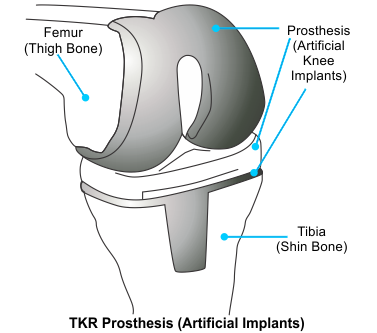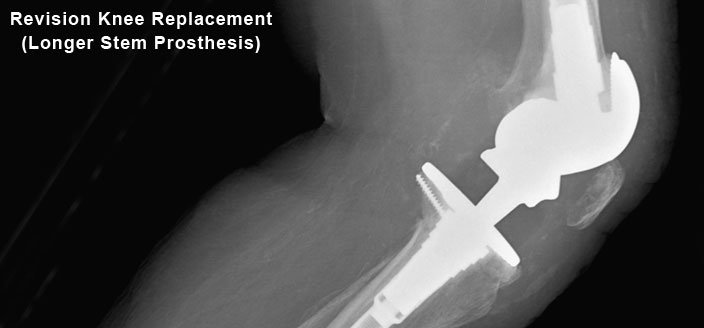


Total Knee Replacement including partial knee replacement s have an excellent track record of lasting close to 15 years in 95% of cases. But, in some cases, knee replacements may wear out for a variety of reasons which include:
When problems with the previously implanted prosthesis occur, such as pain and stiffness, investigation into the cause is required and this generally determines whether a revision knee replacement is required. Dr. (Prof.) Anil Arora decides whether all components of the previous TKR need revision or one component only, for example the polyethylene (plastic) liner.
A revision knee replacement involves removing the old prosthesis and inserting a new one. These knee replacements usually feature a longer stem, which allows the component to be more securely fixed into the bone cavity. The components may also interlock in the centre of the knee to form a hinge to provide greater stability to the joint. Extra pieces of metal and/or plastic may be used to make up for any removed or badly damaged bone. All revision total knee replacement other than for infection are done in a single stage.
When a revision operation is carried out for infection, often the revision procedure is done in two stages. In the first stage the infected prosthesis (and the bone cement if it was used to insert the first prosthesis) is removed. All infected material and soft tissue is cleared from the knee, and samples are taken to confirm which bacteria are causing the infection. A temporary spacer, shaped like a knee prosthesis, can be inserted, and often antibiotics are left inside the knee. The temporary spacer allows knee bending to right angles and weight bearing with crutches. After a period of at least six weeks (or more, depending on when the infection is eradicated), the second stage procedure is performed, when the new prosthesis is inserted.

Post-operative care after knee revision surgery is very similar to the care of a primary knee replacement. This includes a combination of physical therapy, blood management, and pain medication as necessary. Antibiotics and some method of blood clot prevention will be continued in the postoperative period. A brace or splint may be used to protect the joint after the surgery.
Therapy will usually continue for up to three months following the surgery. Assistive devices, such as a walker or crutches, will be used early in the convalescence period, and patients will progress to a cane or walking without any assistance as their condition improves.
Revision TKR is a complex procedure that requires an experienced surgeon and proper pre-operative planning to achieve satisfactory outcomes.